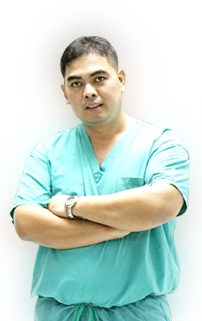Liposuction
Synonymous to : Laser Liposuction, SMART Lipo, Laser Lipo, Tumescent Liposuction, Liposculpturing
Despite good health and a reasonable level of fitness, some people may still have a body profile with disproportionate contours due to localized fat deposits. These patients are not happy or pleased with their body contour and may have body disproportionality. Our body fat deposits are affected by multiple factors such as changes in hormone level that slows down the body metabolism, stress and psychological behavior that may increase our oral intake of nutrients beyond our need and, genetic characteristics that may predispose us to obesity or being overweight.
Suction-assisted lipectomy, or commonly known as liposuction, is a procedure that slims, reshapes, contours, and restores body proportion thus enhancing the patient’s self-image. Liposuction is a surgical aspiration of the fat under the skin, leaving a more pleasing contour and smooth transition between the regions of the body. Liposuction is one of the most commonly performed cosmetic procedures worldwide by certified cosmetic plastic surgeons.
There are several kinds or techniques to perform a liposuction procedure. The three most commonly performed techniques are the tumescent or superwet liposuction, ultrasound-assisted lipoplasty, and laser or SMART Liposuction. The tumescent or super-wet technique requires an infusion of saline solution mixed with adrenaline to facilitate the aspiration or removal of excess fat. Ultrasound-assisted lipoplasty uses ultrasonic energy that liquefies the fat prior to surgical suctioning. Laser or SMART liposuction, on the other hand, is quite similar with ultrasound-assisted technique wherein fat is initially dissolved and then aspirated. There was a sudden increase in demand for SMART/laser liposuction and ultrasound lipoplasty when they were introduced because they were believed to have more superior results than the traditional method. However, in our experience, the advantage that laser liposuction offers patients in terms of improved pain control after surgery and body swelling is significantly less compared to the traditional tumescent technique. With regards to the result, all the three techniques are just about equal. There is no superiority of one method over the other in attaining a pleasing body contour.
Liposuction is more of an art than just a surgical procedure. It demands a good grasp of anatomy and body proportionality. This is the reason why liposuction is better termed as liposculpturing. The body parts or areas of the body that can be treated by liposuction are the abdomen, flanks or love handle, hips and buttocks, upper and lower back, arms, axilla or armpit (for treatment of hyperhydrosis), thighs and knees, chin, and chest area (especially for gynecomastia). The procedure is done by aspirating the subcutaneous fat with the use of a metal pen like liposuction cannulas through a small skin incision. This small incision is placed at the natural folds of the body so that the resulting scar will be concealed or inconspicuous.
This is performed as an out-patient procedure in a fully-equipped ambulatory surgical facility. However, patients with multiple procedures, or prefer to relax immediately after the surgery, will be admitted for a day or two at a hospital. Whether performed as an out-patient or as a hospital procedure, pre-operative laboratory and medical clearance, especially for patients 40 years old and above with a medical condition that requires treatment, is required. This is done a day before the surgery. The procedure can be performed either under local anesthesia or deep sedation depending on the extent of the procedure. Afterwards, the incision site will soak for two to three days, eventually drying up on the fourth to fifth day. All patients are instructed to strictly apply or wear pressure garments for two to three weeks on all body parts addressed by liposuction. The pressure garment will help the skin redrape to underlying muscles, thus obliterating the space left after aspirating the fat and controlling the swelling. This will assist and enhance the healing process. Sutures are removed on the seventh or ninth day after surgery.
Patients are always advised that there will be swelling and some bruising after the surgery. These are temporary and may resolve after one to two weeks. The initial result may be noted after two to four weeks when much of the swelling had subsided. However, the final result will be appreciated by the second to sixth month after surgery.
Patients planning to have this procedure will be required to allot eight to 14 days for the initial consultation, laboratory, medical clearance, surgery, follow-up, suture removal, and early recuperation. After these, the patient is safe to travel since all wounds are already dry and healed.
Possible risks and complications:
- Uneven contours
- Rippling or loose skin
- Skin or nerve damage
- Irregular pigmentation
- Infection
- Fat clots
- Blood clots
- Excessive fluid loss or fluid accumulation
- Unfavorable scarring
- Thermal burn or heat injury from ultrasound with the ultrasound-assisted lipoplasty technique
- Anesthesia risks
- Bleeding (hematoma)
- Change in skin sensation
- Skin discoloration or swelling
- Asymmetry
- Pain, which may persist
- Damage to deeper structures such as nerves, blood vessels, muscles, lungs, and abdominal organs
- Poor wound healing
- Persistent swelling in the legs
- Deep vein thrombosis, cardiac and pulmonary complications
- Possibility of revisional surgery

